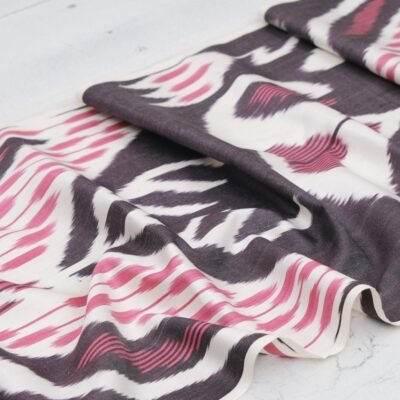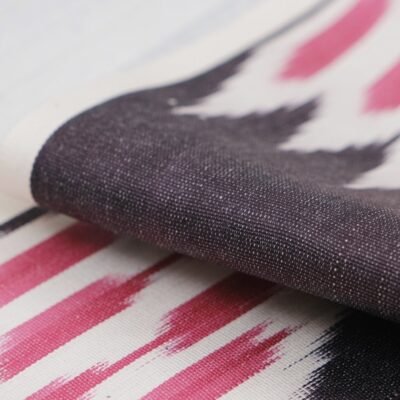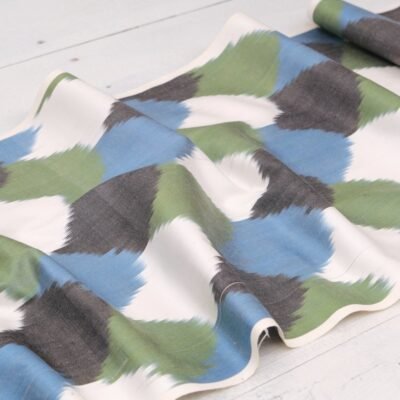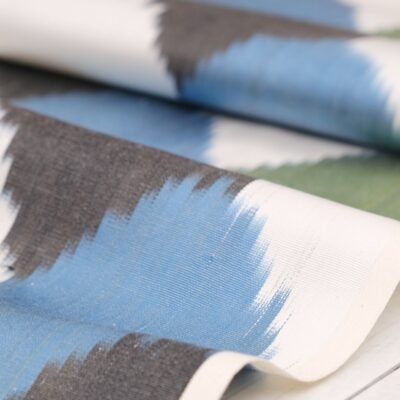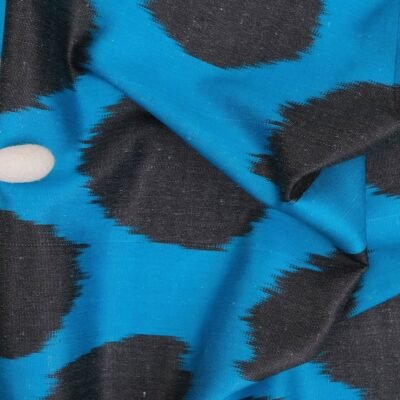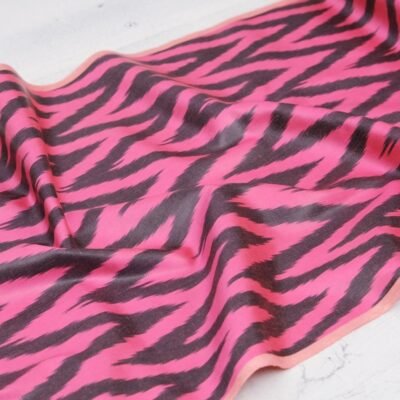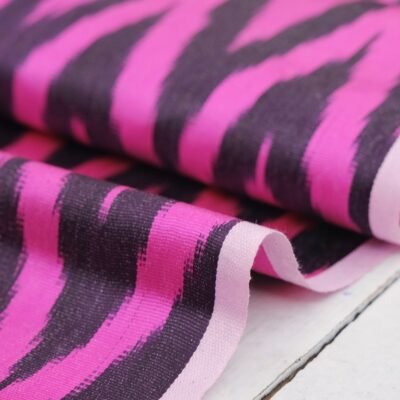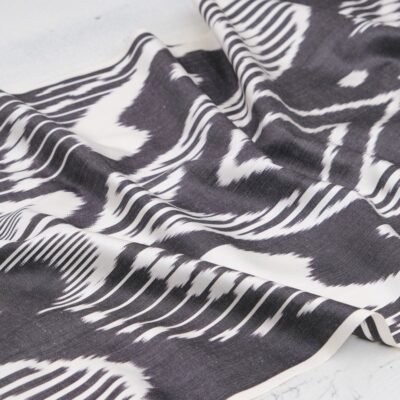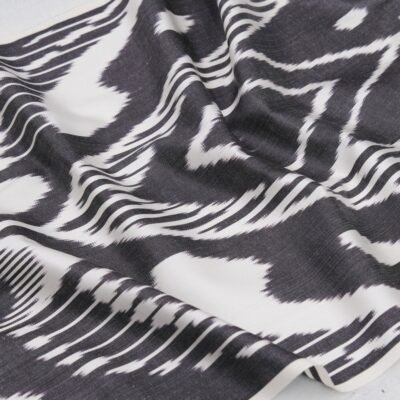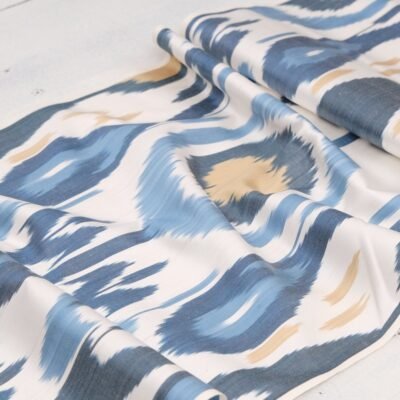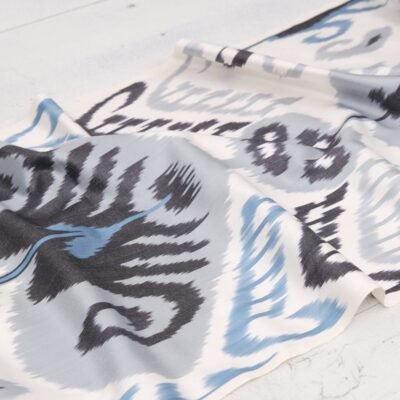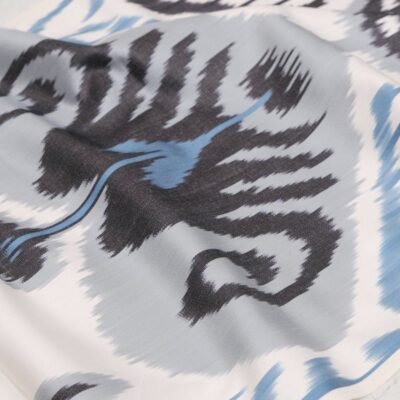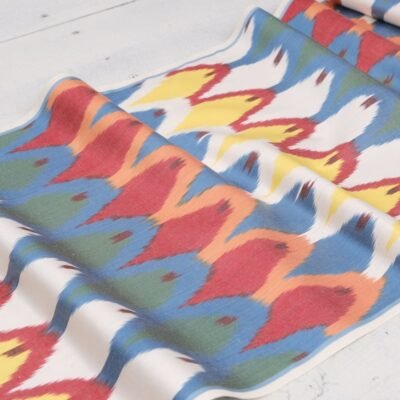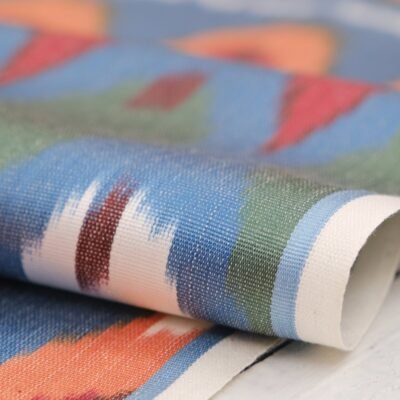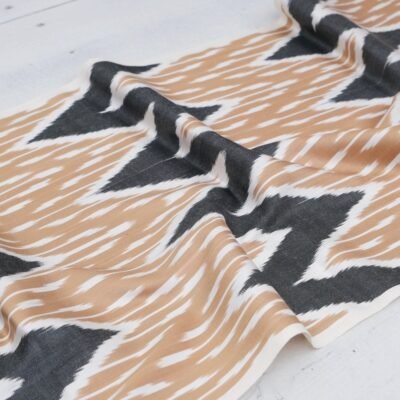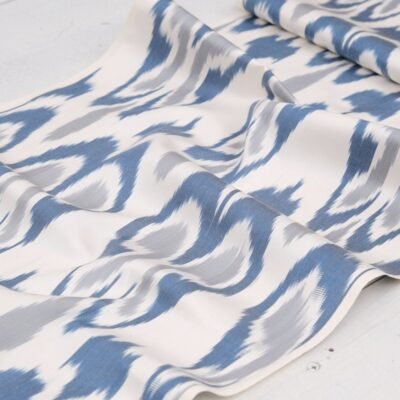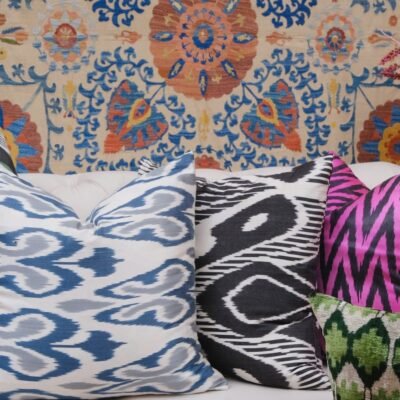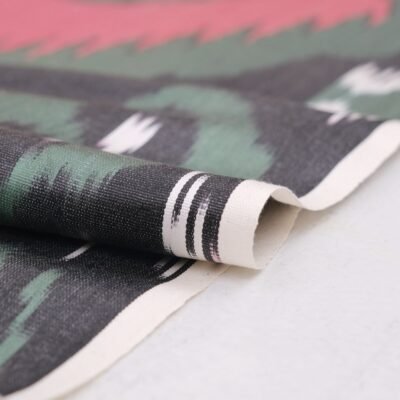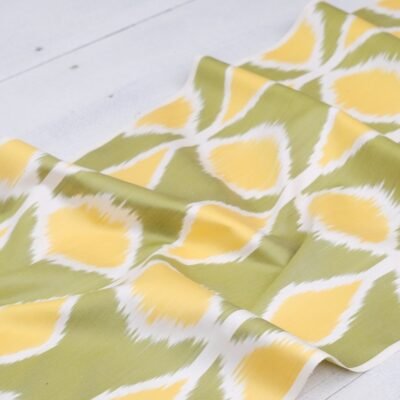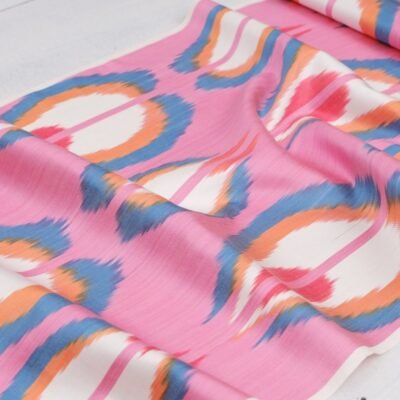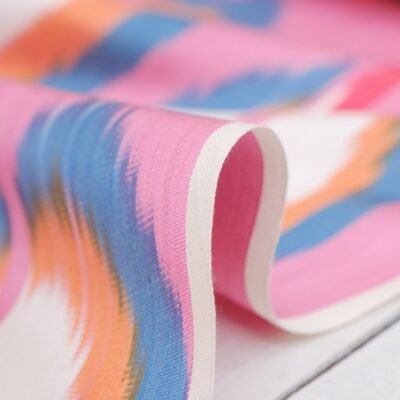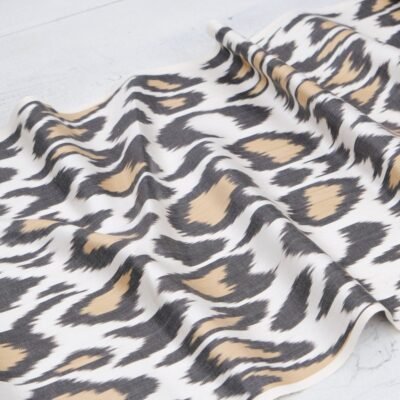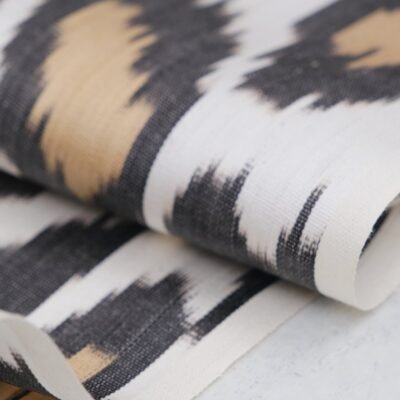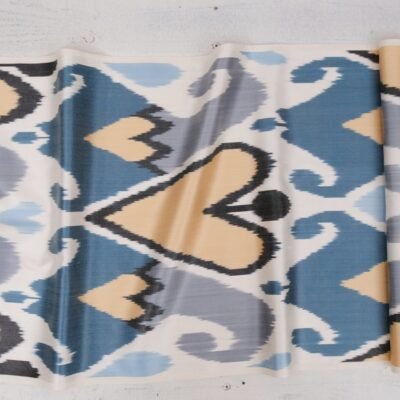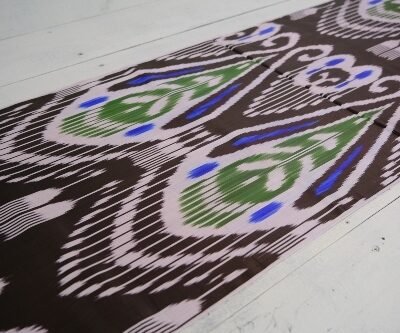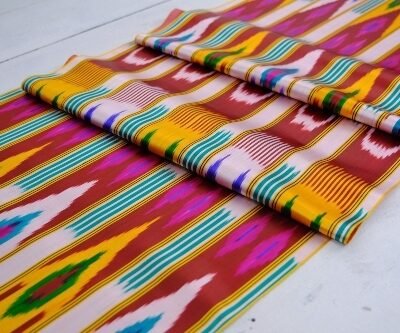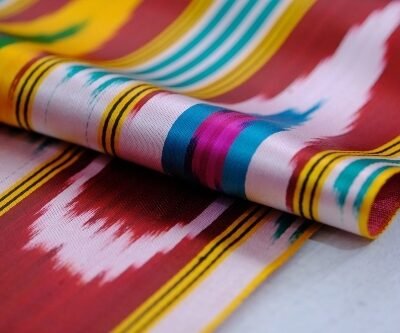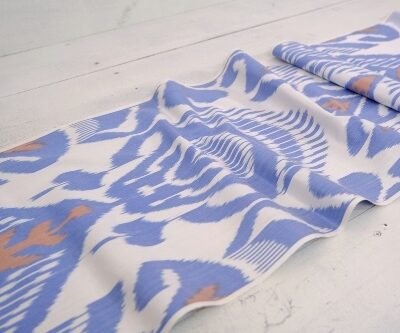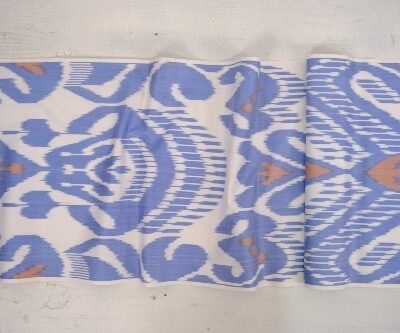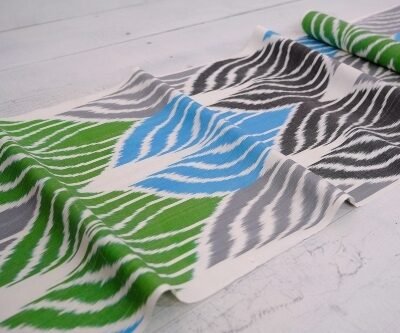Ikat Fabrics by the Yard: How Authentic Silk Ikat Can Enhance Your Unique Designs
The Historical Significance of Ikat Fabric
The history of Ikat fabric is rich with cultural significance, dating back several centuries. This age-old textile technique has roots in various regions across the globe, including Central Asia, Southeast Asia, and Latin America. Ikat, derived from the Malay-Indonesian term 'mengikat,' meaning 'to tie or bind,' refers to the complex dyeing process used to create these unique textiles. The design's intricacy is achieved by tie-dyeing the yarns before they're woven into fabric, resulting in patterns that are both vivid and intricate.
Historically, Ikat fabrics served not only as decorative textiles but also as symbols of status, wealth, and power, particularly in Central Asia. The complexity and time-consuming nature of the Ikat-making process made these textiles a luxury commodity, worn by royalty and the elite class. In addition, Ikat fabrics were often exchanged as dowry gifts or presented as diplomatic gifts, further enhancing their value and importance in historical societies.
Today, the historical significance of Ikat fabrics continues to resonate. These fabrics are seen as cultural treasures, their patterns and designs telling stories of the past. Ikat Fabrics by the Yard are sought after by interior designers, fashion designers, and textile enthusiasts who appreciate their unique aesthetic and historical value.
The Evolution and Techniques of Central Asian Ikat
Central Asia, particularly Uzbekistan, is renowned for its Ikat textiles. The techniques used in Central Asian Ikat making have been developed and refined over centuries, resulting in a distinct style that sets it apart from Ikats from other regions. Central Asian Ikat is characterized by its bold, geometric ikat patterns and vibrant color palettes, often featuring deep reds, brilliant blues, and striking yellows.
The process of creating Ikat is labor-intensive and requires considerable skill. First, the design is conceived and mapped out. Next, the silk threads are tightly bound in specific areas to resist the dye, a process known as 'resist dyeing.' The threads are then dyed, with the bound areas retaining their original color. This process can be repeated multiple times to achieve multi-colored designs. Once the dyeing is complete, the threads are woven into fabric. The result is a fabric with a pattern that appears blurred or feathered at the edges, a characteristic feature of Ikat.
Over the years, the methods and techniques used in Central Asian Ikat have evolved in response to changes in technology, market demands, and societal trends. However, traditional practices remain at the core of Ikat making, preserving the art form's authenticity and cultural significance.
What to Choose: Ikat Fabric by the Yard vs Ikat Fabrics by Meter
When purchasing Ikat fabric, one might wonder whether to buy by the yard or by the meter. This decision largely depends on the specific requirements of your project. Buying Ikat Fabrics by the Yard allows for greater flexibility, as you can purchase the exact amount needed for your design. This can be particularly beneficial for larger projects, such as making curtains or upholstery, where precise measurements are essential.
Conversely, buying Ikat fabrics by the meter may be more suitable for smaller projects or for those who prefer to work with metric measurements. It's also worth noting that fabric sold by the meter is typically wider than fabric sold by the yard, which may influence your decision depending on the project's needs.
Regardless of whether you choose to buy Ikat fabric by the yard or by the meter, it's crucial to consider the quality of the fabric. Authentic Ikat is handwoven from silk, exhibiting a unique sheen and softness that sets it apart from synthetic alternatives. Therefore, when purchasing Ikat, always prioritize quality over quantity to ensure your designs truly shine.
Significant Centers for Ikat Making in Central Asia: Bukhara, Samarkand, and Merv
Central Asia is home to several significant centers for Ikat making, each boasting its unique style and techniques. Bukhara, Samarkand, and Merv are among the region's most renowned Ikat-producing cities.
Bukhara is known for its silk Ikat, characterized by intricate geometric patterns and rich, vibrant colors. The city's Ikat artisans are skilled in using the 'abrbandi' technique, a resist-dyeing process that allows for the creation of complex, multi-colored designs.
Samarkand, another significant center for Ikat production, is famous for its 'atlas' and 'adras' Ikat. Atlas is a pure silk Ikat, while adras is a blend of silk and cotton. Samarkand's Ikats are known for their bold, contrasting colors and large, dramatic patterns.
Meanwhile, Merv, located in present-day Turkmenistan, is renowned for its highly stylized Ikat designs. Merv's Ikat artisans often incorporate symbolic motifs into their designs, such as the 'boteh' or 'paisley' pattern, which is believed to ward off evil.
These cities serve as the pillars of Central Asian Ikat production, their unique styles and techniques contributing to the rich tapestry of Ikat textiles.
Ikat Fabric in the Textile Trade: Medieval Islamic Trade and Distribution of Ikat to Europe
The distribution of Ikat fabric from Central Asia to Europe was facilitated by the medieval Islamic trade routes, particularly the Silk Road. The Silk Road served as a crucial artery for trade between the East and the West, facilitating the exchange of goods, ideas, and culture. Ikat textiles, with their vibrant colors and intricate designs, were highly prized commodities that were sought after by European traders.
During the medieval period, Ikat fabrics were often used in trade as a form of currency, given their high value and demand. They were also presented as diplomatic gifts to European courts, further fueling their popularity and prestige in Europe.
The trade and distribution of Ikat textiles through the Silk Road had a significant impact on European textile design. The unique aesthetic of Ikat, with its abstract, geometric patterns, and bold color palettes, influenced European textile patterns, contributing to the development of 'paisley,' a design that remains popular today.
Contemporary Ikat Fabric by the Yard for Designers & Home Textiles
Today, Ikat Fabrics by the Yard are widely used in interior design and fashion. Their unique patterns and vibrant colors make them a popular choice for adding a touch of exoticism and sophistication to any space or wardrobe.
In interior design, Ikat fabrics can be used in various ways. They can serve as statement pieces, such as upholstery for a chair or sofa, or be used to create eye-catching curtains, ikat pillows and cushions, or wall hangings. Their rich, varied colors can help to tie together different elements within a room, creating a cohesive and harmonious design.
Similarly, in fashion, Ikat fabrics are used to create unique, stylish garments. From ikat designer dresses and blouses to scarves and bags, Ikat textiles can add a pop of color and pattern to any outfit. The fact that each Ikat fabric is handwoven and dyed makes each piece truly one-of-a-kind, appealing to those who value uniqueness and individuality in their wardrobe.
Tips on Buying Ikat Fabric by the Yard
When buying Ikat Fabrics by the Yard, there are several factors to consider to ensure you're getting the best quality for your money.
Firstly, consider the fabric's quality. Authentic Ikat fabric is handwoven from silk, which gives it a unique sheen and softness. Synthetic alternatives, while cheaper, lack the same depth of color and texture. Therefore, always opt for genuine silk Ikat to ensure the best results.
Secondly, consider the fabric's colorfastness. High-quality Ikat should retain its vibrant colors even after repeated washing or exposure to sunlight. To test for colorfastness, simply wet a white cloth and rub it against the fabric. If the color transfers, the fabric may not be colorfast.
Lastly, consider the fabric's design. Each Ikat pattern is unique and tells a story, so choose a design that resonates with you and fits your project's aesthetic.
Colorfastness and Care: Ensuring Longevity of Ikats. Why Ikat is Mainly 40 cm in Width Only?
Ensuring the longevity of Ikat fabrics involves proper care and understanding of the textile's properties. Silk Ikat is known for its colorfastness, meaning the colors should remain vibrant even after repeated use and washing. To maintain the fabric's color, it's recommended to dry clean or hand wash in cold water with a mild detergent.
The question of why Ikat is mainly 40 cm in width has to do with the traditional looms used to weave the fabric. These looms typically produce fabric that's 40 cm wide, a dimension that's been maintained over the years. This width is ideal for creating garments, as it allows for flexibility in cutting and sewing.
How to Identify and Purchase Authentic Ikat Fabric by the Yard
Identifying authentic Ikat Fabric by the Yard involves careful observation and knowledge of the textile's characteristics. Genuine Ikat is handwoven, meaning the fabric will have slight irregularities in the weave, a sign of its handmade nature. Additionally, the pattern on authentic Ikat appears somewhat blurred or feathered at the edges due to the resist-dyeing process.
When purchasing Ikat fabric, it's essential to buy from reputable sellers who specialize in authentic, high-quality textiles. Look for sellers who provide in-depth information about the fabric, such as its origin, the materials used, and the techniques employed in its creation.
Ikat's Role in Sustainable and Ethical Fashion
In recent years, there's been a growing emphasis on sustainable and ethical fashion, and Ikat textiles play a significant role in this movement. The production of Ikat fabric is a traditional craft that supports local economies and preserves cultural heritage. It's an environmentally friendly process that uses natural materials and dyes, making it a sustainable choice for fashion.
Furthermore, buying authentic Ikat Fabrics by the Yard supports artisan communities who continue to practice this age-old craft. By choosing Ikat, you're not only purchasing a beautiful textile but also contributing to the preservation of cultural traditions and promoting fair trade.
In conclusion, Ikat Fabrics by the Yard offer a unique blend of history, artistry, and sustainability. Whether you're a designer seeking inspiration or a textile enthusiast appreciating the craft, these vibrant, intricate textiles have much to offer. Embrace the rich tapestry of Ikat and let it enhance your unique designs.

